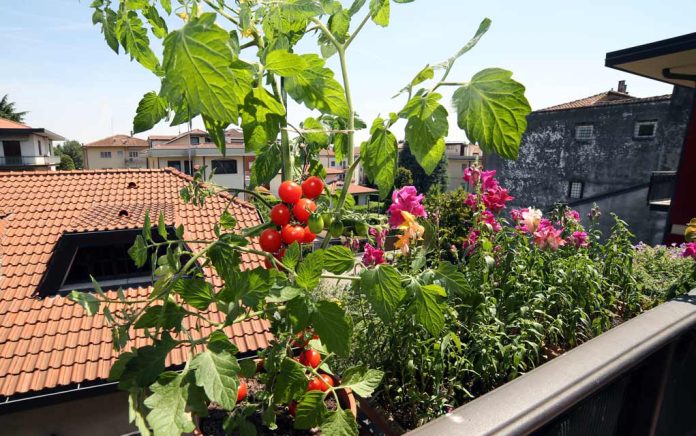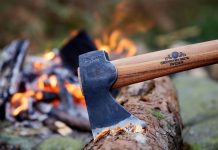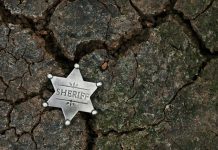(SurvivalDaily.com) – If you’ve ever thought about taking up gardening, now is the perfect time to learn. No one is really sure how long the coronavirus lockdown is going to be in place, which is why people need to know how to supply themselves. Gardening can make a huge difference and is a big step towards self-sufficiency. The best part is you don’t have to have a big yard and even people residing within the inner city can do it.
Gardening in the City
Living in the city gives you access to many things, but, depending on how strict the lockdown procedure is, your options may be limited. Growing a garden will be a game-changer no matter what and it’s not impossible. The main issue with growing a garden in the city is the lack of space, but there are always workarounds.
You can use containers to grow your crops and even hanging baskets to make the most of your space. All you need is an area that sees at least six hours of sunlight a day and some containers, such as five-gallon buckets. Here are a few common urban gardening methods:
Container Gardening – As already mentioned, you can grow vegetables in containers. This is one of the simplest ways you can grow a garden in a metropolitan area. You can grow carrots, potatoes, lettuce, tomatoes, beans, and more. Plants such as tomatoes, beans, and potatoes are better off grown in larger containers as they have larger root systems. Be sure they have adequate lighting and shelter from wind, as wind will dry plants out quickly.
These plants will also need proper drainage, which can be accomplished by raising the container off the ground one to two inches. You can buy containers with holes already in them or you can drill and poke holes into them yourself. Plants grown with this method do require more watering, just be sure to not over water them.
Vertical Vegetable Garden – This system uses shelves, hanging baskets, and trellises to make the most out of your available space. Using containers to grow plants that are placed on shelves makes it easy to keep plants organized and separated. Shelves that are not solid, such as slatted or steel weaved shelves, help drainage and promote airflow. Hanging baskets can be placed anywhere that space allows it and be an effective way to grow plants like cucumbers that vine or trail out. Trellises can be used for a strong base to hang plants such as tomatoes and beans in baskets.
Rooftop Garden – The name may suggest this can only be accomplished on the roof of a building, but that’s not the case. Balconies can be used to the same effect. This is a great way to utilize space that is typically untouched. Using lightweight containers also helps to compensate for rooftop weight limits. Rooftop gardens can be used to grow anything and only require occasional watering and weeding. Rainfall will help the garden as well as reduce runoff. The main advantages of this growing system are the plentiful amount of sunlight plants will get and the inherent portability of plants if they need to be moved out of bad weather.
Best Plants To Grow
Next, you’ll want to consider the plants to grow and some are more ideal than others. While most plants can grow anywhere with weather permitting, some are easier to grow and require less maintenance than others. Also if you don’t have a lot of space you may want to think about what plants have a good balance between its yield and its space consumption.
While there are numerous plants you can grow as a food source, there are a few that stand out from the rest. The simple reality is some plants are easier to grow, but may not provide as much food as others that are more difficult to grow, and vice versa. Striking that balance between maintenance and yield is the key to a successful garden.
Rice may be harder to grow in the northernmost parts of the world, but that doesn’t take away from the fact it feeds more people than any other grain in the world. You can get a surprising amount of rice just from a garden alone. Growing and harvesting rice may be more difficult than most crops, it really is worth it. Studies have shown there is virtually no rice-based allergies, which makes rice an ideal crop and safe for almost everybody.
Blueberries need acidic soil to thrive, but, with the many strains that exist, there’s bound to be one that works for your climate. They’re packed with antioxidants and are beautiful plants, especially in the fall. Add in the fact kids will eat blueberries by the handful and you’ve got a plant that you should consider for your garden.
Buckwheat is a great multipurpose plant. It can be used as green manure and shading out weeds. It can also be used as edible greens similar to lettuce, all while being one of the easiest grains to grow. You can pick the leaves off lightly using them for salad, then cut the plant down to about an inch. Cook the mature greens and harvest the seeds, but be sure to leave remaining plant material in the ground so it will regrow. When the buckwheat regrows, you can cut it back down again and use it for green manure.
Sumac is the weedy tree that grows just about anywhere. Aside from its gorgeous fall coloring, this plant has many virtues. Harvesting the red fruits in July and August and then soaking them will give you a lemon-like tasting beverage high in vitamin C. You can freeze this sumac lemonade as well so you can enjoy it year-round. Sumac can also restore soil to make even bare sand fertile. Be sure to check the color of the berries before harvesting them. White or greenish-white berries indicate that it is poison sumac, so look for the red ones.
Chickpeas can be planted before most other beans as they are very frost tolerant. These can be planted as early as April and as late as July. Whether hot or cold, chickpeas will grow more easily than other beans. Like most beans, chickpeas are high in plant protein and other key nutrients. They may even help control your appetite, which could be essential if you have a limited food supply.
There are many other plants that can be grown. Some will have higher yields than others and some will be harder to grow. It really all comes down to what you feel comfortable with, what foods you prefer, and what your environment can accommodate. Starting a garden now isn’t just good practice for self-sustainability; you’ll be in a better position if this lockdown continues indefinitely.
Copyright 2020, SurvivalDaily.com

















